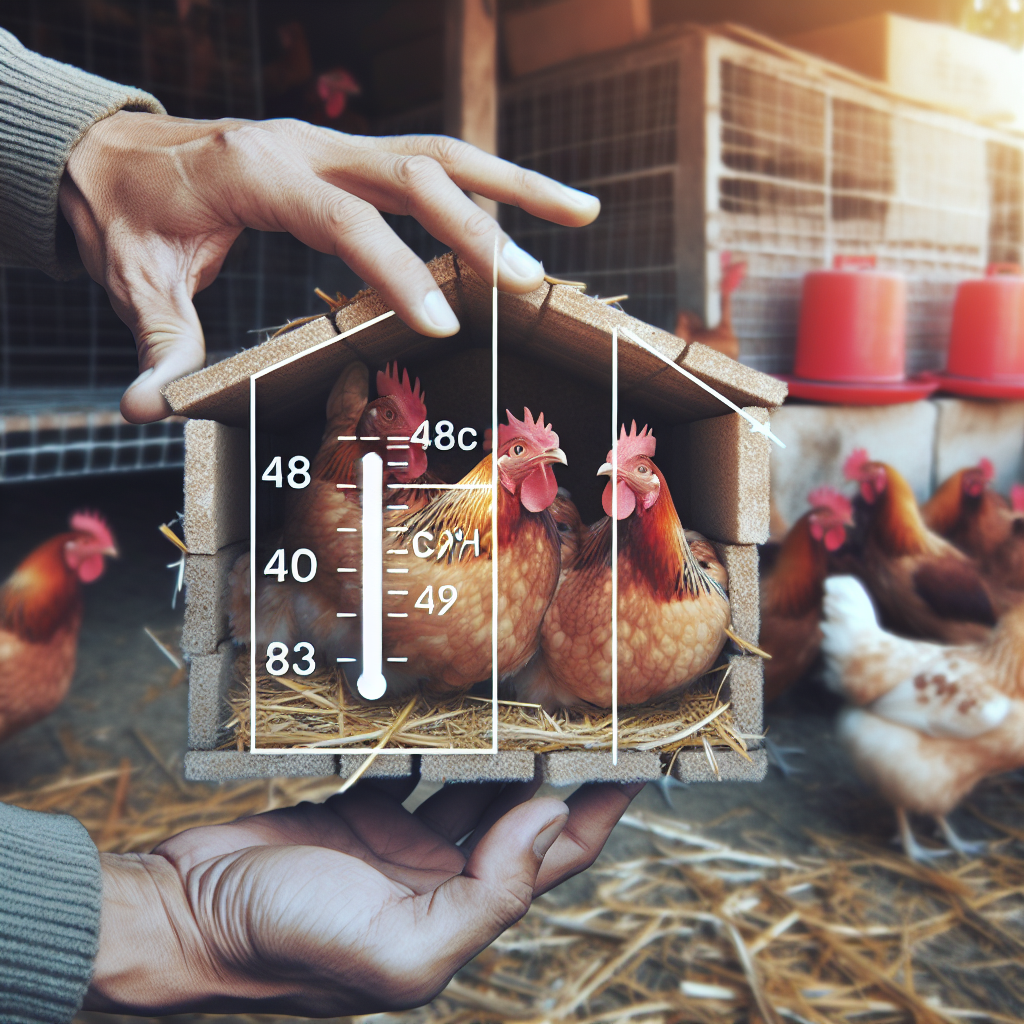If you’ve ever wondered about the process of egg collection and storage, you’re in for a treat. In this article, we will explore the fundamentals of this intriguing practice. From understanding the importance of proper collection techniques to discovering the optimal conditions for storage, you’ll gain a comprehensive understanding of how eggs go from farm to table. So, grab a cup of tea and let’s embark on an egg-citing journey together!
Choosing the Right Eggs
When it comes to egg collection, it is important to determine the purpose of the collection. Are you collecting eggs for personal consumption or for commercial purposes? This will help you determine the quantity and quality of eggs you need to collect.
Once you have determined the purpose, it is crucial to select the appropriate type of eggs. There are different types of eggs available, ranging from chicken eggs to duck eggs, quail eggs, and more. Each type of egg has its own unique characteristics, such as size, taste, and nutritional value, so it’s important to choose the type of egg that best suits your needs.
In addition to considering the type of eggs, it is essential to take health and safety standards into account. Look for eggs that come from healthy hens that are raised in a clean and hygienic environment. This will ensure that the eggs you collect are safe to consume.
Collection Techniques
When it comes to collecting eggs, there are two main techniques: hand collection and automatic collection systems.
Hand collection involves physically collecting the eggs by hand. This method is commonly used in small-scale or backyard egg production. It allows for careful inspection of each egg and minimizes the risk of damaging the eggs during collection.
On the other hand, automatic collection systems are used in larger commercial egg production facilities. These systems use conveyor belts and automated mechanisms to collect eggs from the hens’ nests. While this method is more efficient and time-saving, it requires proper maintenance and monitoring to ensure that the eggs are not damaged during the collection process.
Regardless of the collection technique used, it is important to minimize stress during the collection process. Handle the eggs with care to prevent cracking or breaking, and avoid sudden movements that may startle the hens. This will help ensure that the eggs are in optimal condition for storage.
Handling and Grading Eggs
Proper egg handling techniques are crucial to maintain the quality and freshness of the eggs. When handling eggs, it is important to avoid excessive shaking or dropping, as this can damage the eggs and compromise their quality. Instead, gently handle the eggs using clean hands or gloves.
To ensure that only high-quality eggs are stored, candling and grading techniques are used. Candling involves shining a light through the egg to detect any defects, such as cracks or blood spots. Grading, on the other hand, involves categorizing eggs based on their quality and size. This ensures that only eggs of a certain standard are stored for consumption or sale.
Sorting for quality and size is also an important step in handling eggs. This helps to ensure that the eggs are packed and stored appropriately. Eggs of similar size and quality should be grouped together to make packaging and labeling easier.
Cleaning and Sanitizing
The importance of cleaning cannot be understated when it comes to egg collection and storage. It is vital to clean the eggs thoroughly to remove any dirt, feces, or debris that may be present on the surface. This not only improves the appearance of the eggs but also helps prevent the growth of bacteria.
Proper cleaning procedures should be followed to ensure that the eggs are cleaned effectively and safely. Start by using warm water and a mild detergent to gently scrub the eggs. Rinse them thoroughly with clean water, making sure all traces of detergent are removed. Avoid using harsh chemicals or abrasive materials as they can damage the eggs.
In addition to cleaning, eggs also need to be sanitized for storage. This helps to kill any remaining bacteria and prevent contamination. There are different sanitizing methods available, such as using a food-grade sanitizer or applying a sanitizing rinse. Follow the recommended guidelines and ensure that the eggs are properly sanitized before storing them.
Storage Conditions
Proper storage conditions are essential for maintaining the freshness and quality of eggs. The ideal temperature for egg storage is between 35°F and 45°F (1.7°C and 7.2°C). This helps to slow down the natural deterioration process and extend the shelf life of the eggs.
Along with temperature, humidity levels should also be considered. The humidity in the storage area should be maintained at around 70-80% to prevent the eggs from drying out. Proper egg positioning is also important during storage. Store the eggs with the pointed end down to help prevent the air pocket inside the egg from rising to the top and causing the yolk to float.
Proper ventilation is another crucial factor in egg storage. Adequate ventilation helps to remove any excess moisture or gases that may accumulate in the storage area. This ensures that the eggs are not adversely affected and remain fresh.
Length of Storage
Determining the shelf life of the eggs is important to ensure that they are consumed or sold within their optimal period. The shelf life of eggs can vary depending on various factors, such as their freshness at the time of collection and storage conditions.
It is important to manage inventory and rotation to minimize the chances of keeping the eggs past their recommended shelf life. By practicing proper inventory management, you can ensure that older eggs are used or sold first, reducing the risk of spoilage.
Monitoring the quality of stored eggs is crucial to prevent any issues. Regularly inspect the eggs for signs of deterioration, such as off odors or discoloration. This will help you identify any quality problems early on and take appropriate actions.
Packaging and Labeling
Proper packaging is essential for protecting eggs during storage and transportation. Eggs should be packed in clean and sturdy containers that provide adequate protection against physical damage.
Labeling requirements also need to be considered. Proper labeling helps to ensure that consumers are informed about the type of eggs, expiration date, and any other relevant information. Labels should be clear and easy to read to prevent any confusion.
Preventing contamination is a top priority when it comes to packaging and labeling eggs. All packaging materials should be clean and free from any harmful substances. Additionally, it is important to handle the eggs with clean hands or gloves during the packaging process to prevent cross-contamination.
Transporting Eggs
Transporting eggs safely is crucial to maintain their quality throughout the journey. Safe transportation methods involve using vehicles that are specifically designed for carrying eggs. These vehicles have proper storage compartments and temperature control systems to ensure that the eggs are not exposed to extreme temperatures or physical damage.
To protect eggs during transit, it is vital to use appropriate packaging materials, such as foam or cartons, to provide cushioning and prevent breakage. The eggs should be securely packed to minimize movement within the packaging and reduce the risk of damage.
Maintaining temperature control during transportation is key to preserving the quality of the eggs. The vehicle should be well-insulated and equipped with temperature-monitoring devices to ensure that the eggs are kept at the recommended temperature range.
Challenges and Troubleshooting
There are several common storage issues that may arise during egg collection and storage. These include temperature fluctuations, excessive moisture, and improper handling. It is important to address these issues promptly to prevent any damage to the eggs and maintain their quality.
Preventing egg breakage is a major concern when it comes to egg collection and storage. Ensuring gentle handling techniques, proper packaging, and adequate cushioning during transportation can help reduce the risk of breakage.
Addressing quality problems is crucial to maintain consumer satisfaction. Regular monitoring and inspection of stored eggs can help identify any quality issues early on. Taking appropriate actions, such as removing eggs that show signs of deterioration, will help maintain the overall quality of the stored eggs.
Regulatory Requirements
When it comes to egg collection and storage, compliance with food safety guidelines is of utmost importance. It is crucial to follow the recommended guidelines and standards to ensure that the eggs produced and stored meet the necessary quality and safety requirements.
Labelling and traceability of eggs are also important aspects to consider. Proper labeling helps consumers make informed decisions and ensures transparency. Traceability allows for easier identification of the source of eggs in case of any quality or safety concerns.
Complying with local regulations is essential to operate within the legal framework. Familiarize yourself with the regulations specific to your location and industry to avoid any legal issues.
In conclusion, egg collection and storage involve several important considerations. From choosing the right eggs to handling, grading, and packaging them properly, every step is crucial in maintaining the quality and safety of the eggs. By following the recommended guidelines, you can ensure that your eggs are fresh, safe, and of the highest quality.




